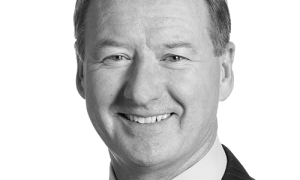Korea watchers are debating whether Jang’s purge reflects the strength or weakness of his nephew Kim Jong Un. Some experts perceive a weak, embattled Kim feeling forced to fend off challengers. But, it is more likely that the purge of hundreds of North Korean officials since 2011 shows Kim Jong Un is firmly in control and confident enough to remove even the senior-most strata of officials. He has already replaced the minister of defense and chief of the general staff several times during his two year reign.
Kim Jong Un would have been weakest immediately after his father’s death in December 2011. But even then, he was immediately presented as the sole ruler and not as a troika of Kim Jong Un, Jang Song Taek, and Kim Kyong Hui (Kim Jong Il’s sister). After Kim Jong Un acquired each of his father’s six titles signifying control over the government, military, and party, it became increasingly more difficult for potential challengers to oust him.
Although Jang was often referred to as a “reformer” by the media, there is no evidence that he or any hidden cabal advocates implementing economic and political reform or moderating North Korea’s threatening behavior. Pyongyang created the perception of factions of hardliners and reformers as part of a “good cop/bad cop” strategy to elicit benefits during negotiations. As a Korean adage warns, "The same animal has soft fur and sharp claws."
After the death of North Korean leader Kim Il Sung in 1994, some experts erroneously predicted that Kim Jong Il was actually a closet reformer and North Korea was on the cusp of implementing bold economic reform. When his son Kim Jong Un ascended the throne in 2011, he was similarly predicted to be a reformer merely because he had spent a few years in Switzerland as a teen.
Moreover, media coverage of North Korean reform seems to tilt only in one direction. When a perceived North Korea ‘hardliner’ is removed from office, pundits declare that this shows Kim Jong Un (or Kim Jong Il before him) is now free to implement his more benign policies. But when a supposed ‘engager’ is removed, there is not a similar plethora of media stories conversely predicting that the North Korean leader will now impose a tougher policy.
The danger is not in this faulty analysis, but that these naïve assessments of benevolent North Korean intentions are inevitably followed by policy recommendations that the United States and South Korea must strengthen the supposed reform movement by offering yet more concessions.
The departure of Jang Song Taek will have little impact on North Korea policy. Kim Jong Un has shown himself to be just as inimical to political and economic reform or pursuing a less belligerent policy as his predecessors. Kim fils showed his willingness to escalate tensions on the Korean Peninsula to dangerous levels earlier this year, threatening nuclear attacks against the United States and South Korea.
Pyongyang has also made clear that it has no intention of abandoning its nuclear weapons. North Korea revised its constitution to enshrine itself as a nuclear weapons state. The leadership declared, , “those who talk about an economic reward in return for the dismantlement of [North Korea’s] nuclear weapons would be well advised to awake from their daydream…Only fools will entertain the delusion that we will trade our nuclear deterrent for petty economic aid.”
Although North Korea is currently in its “charm offensive” phase, it is only a matter of time before the regime inevitably reverts to provocations. Meanwhile, Pyongyang continues to refine its nuclear weapons and missiles. Satellite imagery shows activity at North Korea’s nuclear test site and continuing improvements at the long-range missile test facility. South Korean Defense Minister Kim Kwan Jin announced earlier this year that Pyongyang already has the capability to reach the United States with its Unha-3 missile.
While holding the world at bay, Kim Jong Un wages an internal war by relying on purges to eliminate real or imagined enemies and an extensive gulag system to intimidate the populace. The North Korean leadership may have changed two years ago, but it is quite clear that the policies haven’t.
- Bruce Klingner is a senior research fellow at the Heritage Foundation.
Originally appeared in The Wall Street Journal




